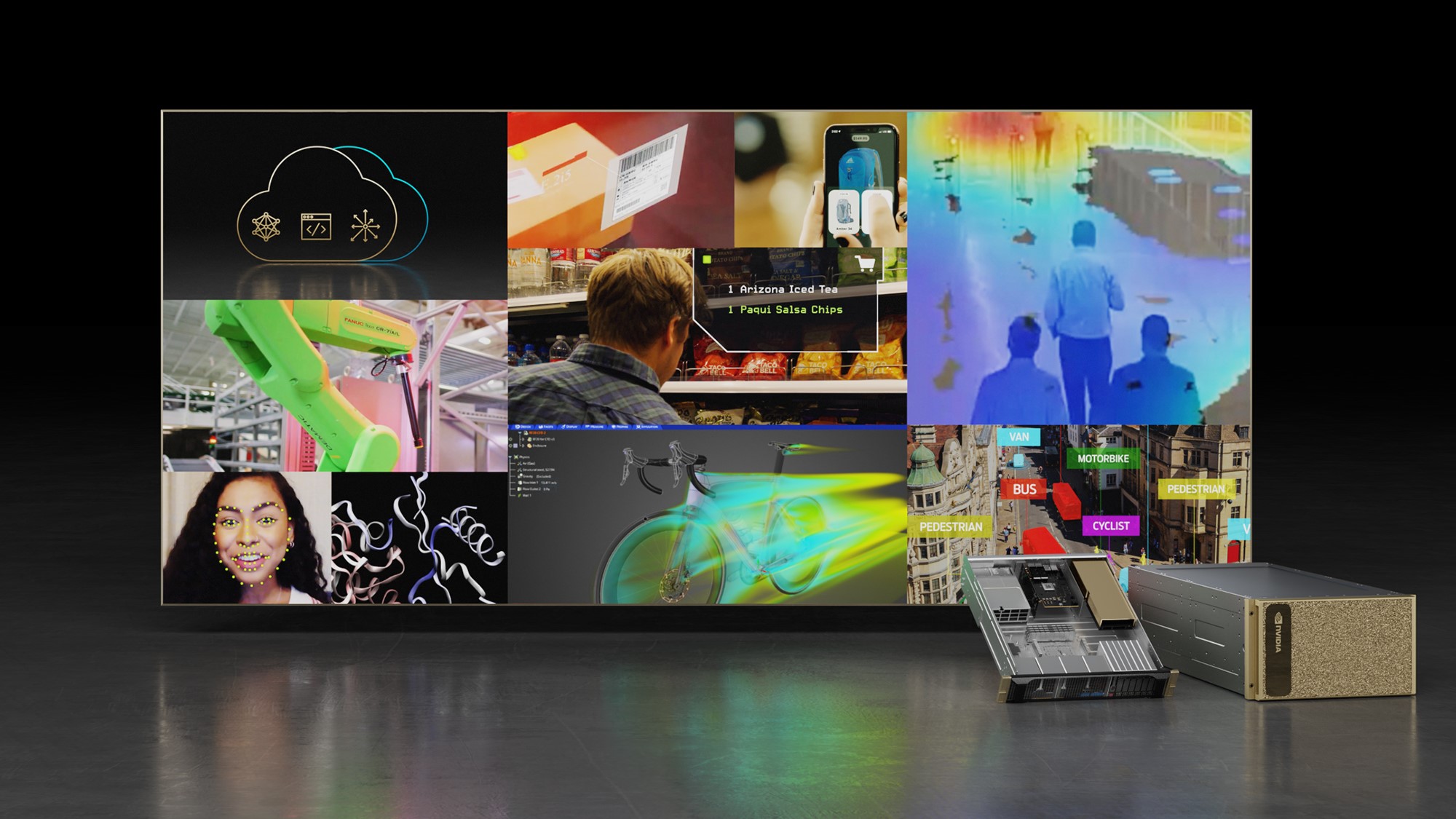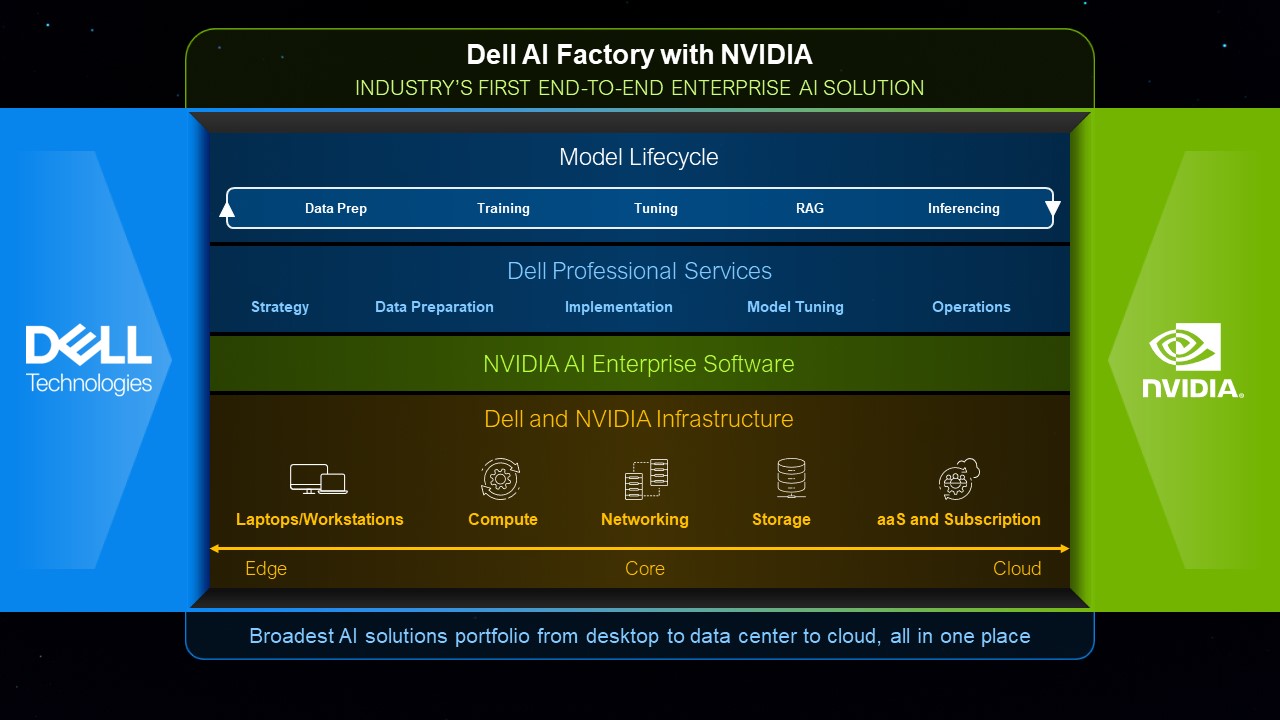
Introduction
We are thrilled to explore the intriguing topic related to Nvidia: The AI and Gaming Solution for Every Need. Let’s weave interesting information and offer fresh perspectives to the readers.
Table of Content
- 1 Introduction
- 2 The Green Giant’s Reign: Nvidia’s Dominance
- 2.1 From Humble Beginnings to Global Domination
- 2.1.1 The Gaming Landscape: A Visual Feast
- 2.1.1.1 Ray Tracing: Bringing Realism to Life
- 2.1.1.1.1 DLSS: Performance Without Compromise
- 3 The AI Revolution: Nvidia’s Expanding Empire
- 3.2 Beyond Gaming: The AI Frontier
- 3.2.2 Data Centers: The Heart of AI
- 3.2.2.2 Autonomous Vehicles: Driving the Future
- 4 The Future of Nvidia: A Vision for Tomorrow
- 4.3 The Metaverse and Beyond
- 4.3.3 Challenges and Opportunities
- 4.3.3.3 Ethical Considerations: Responsible Innovation
- 5 Conclusion
- 6 FAQs
- 7 Closure
Nvidia: The AI and Gaming Solution for Every Need
The Green Giant’s Reign: Nvidia’s Dominance
Nvidia. The name itself conjures images of high-performance graphics, cutting-edge technology, and a green logo that’s become synonymous with gaming and, increasingly, artificial intelligence. But what exactly makes Nvidia such a powerhouse? How have they managed to corner the market on both gaming GPUs and AI accelerators? It’s a story of innovation, strategic acquisitions, and a keen eye for emerging trends. Think about it – you’re probably reading this on a device powered by technology that, at some level, relies on Nvidia’s innovations. From the subtle glow of your phone screen to the complex calculations powering your favorite AI assistant, Nvidia’s influence is pervasive. But it wasn’t always this way. Their journey is a testament to the power of vision, adaptation, and a relentless pursuit of technological advancement. We’ll delve into the specifics, exploring the history, the current landscape, and the future implications of Nvidia’s dual-pronged approach to gaming and AI. We’ll unpack the technology, dissect the market strategies, and consider the ethical implications of this technological juggernaut. Get ready for a deep dive into the world of Nvidia, where pixels meet processors and gaming meets artificial intelligence.
From Humble Beginnings to Global Domination
Nvidia’s story is one of remarkable growth and transformation. Initially focused on the gaming market, they quickly recognized the potential of their technology in other fields. Their early success with high-performance graphics cards laid the foundation for their later expansion into the lucrative world of AI. This wasn’t a random leap; it was a strategic move based on years of research and development. Their GPUs, originally designed to render stunning visuals in games, turned out to be remarkably well-suited for the parallel processing demands of AI algorithms. This serendipitous discovery propelled Nvidia to the forefront of the AI revolution. Think of it as a perfect storm: existing technology perfectly positioned for a rapidly emerging market. This isn’t just about luck, though. It’s a testament to Nvidia’s ability to identify and capitalize on emerging trends. They didn’t just build great graphics cards; they built a platform for innovation that transcended the gaming world. This foresight is a key component of their success. Their ability to anticipate future needs and adapt their technology accordingly has been crucial to their continued dominance. We’ll explore this foresight in more detail, examining specific examples of how Nvidia anticipated and shaped market trends.
The Gaming Landscape: A Visual Feast
Let’s start with the obvious: Nvidia’s impact on gaming. Remember those clunky, low-resolution graphics of the early days? Nvidia’s innovations, from the GeForce 256 to the RTX series, have revolutionized the gaming experience. The visual fidelity, the realistic physics, the immersive worlds – it’s all thanks to the relentless pursuit of graphical excellence. But it’s not just about raw power; it’s about features like ray tracing, DLSS (Deep Learning Super Sampling), and other technologies that enhance the gaming experience beyond simple graphical fidelity. Imagine trying to play a modern AAA title on a system without an Nvidia GPU – the performance would be abysmal. Nvidia has set the standard for gaming graphics, and their influence is undeniable. Their marketing campaigns, often featuring stunning visuals and celebrity endorsements, have further cemented their position as the leading provider of gaming GPUs. But the gaming market is competitive. AMD, Intel, and others are vying for market share, forcing Nvidia to constantly innovate and improve. This competition, while challenging, has also driven Nvidia to push the boundaries of what’s possible in gaming technology. It’s a dynamic market, and Nvidia’s continued dominance is a testament to their ability to adapt and innovate.
Ray Tracing: Bringing Realism to Life
Ray tracing, a technique that simulates the way light interacts with objects in the real world, has transformed gaming visuals. Nvidia’s RTX series GPUs were the first to bring real-time ray tracing to mainstream gaming, creating incredibly realistic and immersive environments. Before ray tracing, reflections and shadows often looked artificial and lacked depth. Now, with ray tracing, games look breathtakingly realistic. Imagine the difference between a painting and a photograph – that’s the level of realism ray tracing brings to gaming. This technology isn’t just about aesthetics; it enhances the overall gaming experience, making games more engaging and immersive. But ray tracing is computationally expensive, requiring significant processing power. Nvidia’s advancements in GPU architecture have made ray tracing possible in mainstream gaming, a feat that was once considered impossible. This is a testament to their engineering prowess and their commitment to pushing the boundaries of what’s possible in gaming technology. The impact on the industry is significant, raising the bar for visual fidelity in games and driving developers to create even more stunning visuals. We’ll explore the technical aspects of ray tracing and its future implications in more detail later.
DLSS: Performance Without Compromise
DLSS (Deep Learning Super Sampling) is another game-changer from Nvidia. This AI-powered technology increases frame rates without sacrificing image quality. It works by using AI to upscale lower-resolution images to higher resolutions, resulting in smoother gameplay and improved performance. Imagine trying to play a game at 4K resolution with maximum settings – it would require an incredibly powerful system. DLSS allows you to achieve similar visual fidelity at a lower resolution, significantly reducing the strain on your system and allowing for smoother gameplay. This is a prime example of how Nvidia leverages AI to enhance the gaming experience. It’s not just about brute force; it’s about intelligent optimization. The implications are significant, allowing gamers to enjoy high-quality visuals even on less powerful systems. This technology is constantly evolving, with new versions offering even better performance and image quality. We’ll examine the technical details of DLSS and its future potential in the following sections.
The AI Revolution: Nvidia’s Expanding Empire
Beyond Gaming: The AI Frontier
Nvidia’s success in the gaming market has provided a solid foundation for their expansion into the rapidly growing field of artificial intelligence. Their GPUs, originally designed for rendering graphics, are remarkably well-suited for the parallel processing tasks required by AI algorithms. This wasn’t a planned diversification; it was a natural evolution based on the inherent capabilities of their technology. The same processing power used to render stunning visuals in games can also be used to train complex AI models, analyze massive datasets, and power self-driving cars. This realization opened up a whole new world of opportunities for Nvidia, transforming them from a gaming company into a leading player in the AI revolution. Their strategic acquisitions, such as Mellanox, have further solidified their position in the AI market, providing them with the necessary infrastructure and expertise to compete with the giants of the tech world. The synergy between their gaming and AI divisions is remarkable, with advancements in one area often leading to innovations in the other.
Data Centers: The Heart of AI
Nvidia’s data center business is booming. Their high-performance GPUs are used to power some of the world’s most advanced AI systems, from large language models like GPT-3 to complex image recognition systems. These data centers require immense processing power, and Nvidia’s GPUs are perfectly suited for the task. Their architecture is optimized for parallel processing, allowing them to handle the massive computational demands of AI algorithms. Imagine the amount of data required to train a sophisticated AI model – it’s astronomical. Nvidia’s GPUs are capable of processing this data at incredible speeds, accelerating the development and deployment of AI systems. This is a significant market, and Nvidia’s dominance is undeniable. Their partnerships with major cloud providers like AWS, Azure, and Google Cloud further solidify their position in this lucrative market. The future of AI is inextricably linked to the power of data centers, and Nvidia is at the heart of it all.

Autonomous Vehicles: Driving the Future
The autonomous vehicle market is another area where Nvidia is making significant strides. Their DRIVE platform provides the necessary hardware and software for self-driving cars, enabling them to perceive their environment, make decisions, and navigate safely. Imagine the complexity of programming a car to drive itself – it’s a monumental task. Nvidia’s DRIVE platform simplifies this process, providing a comprehensive solution for autonomous vehicle development. This is a rapidly growing market, with major automakers and tech companies investing heavily in self-driving technology. Nvidia’s position in this market is strong, with partnerships with leading automakers and technology companies. The ethical implications of autonomous vehicles are significant, and Nvidia is actively addressing these concerns, working to ensure the safety and reliability of their technology. The future of transportation is likely to be autonomous, and Nvidia is playing a crucial role in shaping that future.
The Future of Nvidia: A Vision for Tomorrow
The Metaverse and Beyond
The metaverse is a rapidly evolving concept, and Nvidia is well-positioned to play a key role in its development. Their GPUs are essential for rendering the complex 3D environments that will make up the metaverse. Imagine a virtual world where you can interact with others, explore new environments, and participate in immersive experiences – that’s the metaverse. Nvidia’s technology is crucial for creating these immersive experiences. Their Omniverse platform is a key component of this vision, providing a collaborative platform for creating and simulating 3D worlds. This platform is being used by various industries, from automotive design to architecture, showcasing the versatility of Nvidia’s technology. The metaverse is still in its early stages, but Nvidia’s involvement suggests a bright future for the company in this rapidly evolving space.
Challenges and Opportunities
Despite Nvidia’s dominance, challenges remain. Competition is fierce, with AMD and Intel constantly striving to improve their offerings. The semiconductor industry is also facing supply chain issues and geopolitical uncertainties, which can impact Nvidia’s production and profitability. However, Nvidia’s strong financial position and its ability to innovate suggest that they are well-equipped to navigate these challenges. The opportunities are immense, with the AI and gaming markets continuing to grow at a rapid pace. Nvidia’s strategic acquisitions and its commitment to research and development position it well for continued success. The future looks bright for Nvidia, with its technology shaping the future of gaming, AI, and beyond.
Ethical Considerations: Responsible Innovation
As Nvidia’s technology becomes increasingly powerful, ethical considerations become paramount. The use of AI in autonomous vehicles, facial recognition, and other applications raises concerns about privacy, bias, and accountability. Nvidia is actively addressing these concerns, working to ensure that its technology is used responsibly and ethically. This involves developing guidelines, promoting transparency, and collaborating with researchers and policymakers to address the ethical challenges of AI. The responsible development and deployment of AI are crucial, and Nvidia’s commitment to ethical innovation is essential for ensuring the beneficial use of its technology. The future of AI depends on responsible innovation, and Nvidia is playing a vital role in shaping that future.
Conclusion
Nvidia’s journey from a gaming graphics card company to a global leader in AI is a remarkable story of innovation, strategic foresight, and a relentless pursuit of technological excellence. Their dominance in both the gaming and AI markets is a testament to their ability to adapt to changing trends and to consistently deliver cutting-edge technology. From the breathtaking visuals of ray-traced games to the powerful processing capabilities of their GPUs powering AI systems, Nvidia’s impact is undeniable. Their future looks bright, with the metaverse and other emerging technologies presenting exciting opportunities for growth and innovation.
However, with great power comes great responsibility. Nvidia’s continued success hinges not only on technological advancement but also on ethical considerations and responsible innovation. Addressing the challenges of AI bias, data privacy, and the responsible deployment of autonomous vehicles will be crucial for their long-term success and the positive impact of their technology on society. The next chapter of Nvidia’s story will be defined by how well they navigate these complexities while continuing to push the boundaries of what’s possible.

FAQs
- What is Nvidia’s main competitor? AMD is Nvidia’s primary competitor in the GPU market, although Intel is also increasingly competitive.
- How does Nvidia’s technology benefit AI development? Nvidia’s GPUs are highly efficient at parallel processing, crucial for training large AI models and performing complex calculations.
- What is ray tracing, and why is it important? Ray tracing is a rendering technique that simulates how light interacts with objects, creating more realistic visuals in games and other applications.
- What is DLSS? DLSS (Deep Learning Super Sampling) is an AI-powered technology that enhances image quality and performance in games by upscaling lower-resolution images.
- What role does Nvidia play in the metaverse? Nvidia’s GPUs and Omniverse platform are essential for creating and rendering the complex 3D environments that will make up the metaverse.
Closure
In conclusion, we hope this article has provided valuable insights into Nvidia: The AI and Gaming Solution for Every Need. We thank you for taking the time to read this article. See you in our next article!
